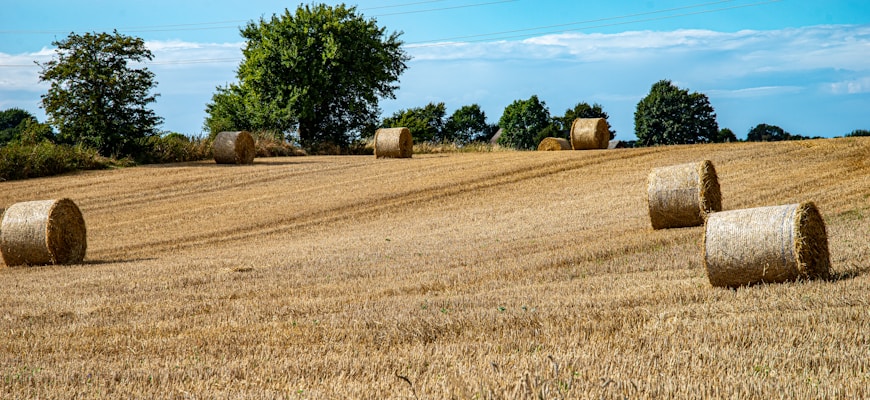The Role of Staking and Yield Farming in Token Valuation

- Understanding the Basics of Staking and Yield Farming
- How Staking Influences Token Valuation
- Exploring the Relationship Between Yield Farming and Token Price
- Maximizing Returns Through Staking and Yield Farming Strategies
- The Impact of Staking Rewards on Token Holders
- Future Trends in Staking and Yield Farming for Token Valuation
Understanding the Basics of Staking and Yield Farming
Staking and yield farming are essential concepts in the world of cryptocurrencies and blockchain technology. These practices involve participating in networks by holding and locking up tokens to support the network’s operations and security.
Staking allows token holders to earn rewards for validating transactions and maintaining the blockchain network. By staking their tokens, users contribute to the network’s security and decentralization, which in turn helps to increase the overall value of the token.
Yield farming, on the other hand, involves providing liquidity to decentralized finance (DeFi) protocols in exchange for rewards. Users can earn additional tokens by lending or borrowing assets on these platforms, thereby maximizing their returns on investment.
Both staking and yield farming play a crucial role in token valuation by incentivizing users to actively participate in network activities. These practices help to create a more engaged community of token holders, which can lead to increased demand and liquidity for the token.
In conclusion, understanding the basics of staking and yield farming is essential for anyone looking to maximize their returns in the cryptocurrency space. By participating in these activities, users can not only earn rewards but also contribute to the growth and development of blockchain networks.
How Staking Influences Token Valuation
One of the key factors that influences the valuation of a token is staking. Staking involves holding a certain amount of tokens in a cryptocurrency wallet to support the network’s security and operations. This process helps validate transactions and create new blocks on the blockchain. As a reward for staking, token holders earn additional tokens, which can increase the overall value of their investment.
By staking tokens, investors are essentially locking them up for a period of time, making them less liquid in the market. This reduction in supply can create scarcity, which can drive up the demand for the token. As more investors participate in staking, the available supply of tokens in circulation decreases, leading to a potential increase in the token’s value.
Additionally, staking can also provide voting rights and governance power to token holders. This gives them a say in the decision-making process of the network, which can further enhance the value of the token. Projects that have a strong community of stakers are often seen as more reliable and trustworthy, which can attract more investors and increase the token’s valuation.
Overall, staking plays a significant role in determining the value of a token. By incentivizing holders to lock up their tokens, staking can create scarcity, drive up demand, and enhance the overall utility of the token. Investors looking to maximize their returns should consider the staking opportunities available for their tokens to potentially increase their investment value.
Exploring the Relationship Between Yield Farming and Token Price
One of the key aspects to consider when evaluating the value of a token is the relationship between yield farming and token price. Yield farming has become increasingly popular in the cryptocurrency space as a way for investors to earn passive income by providing liquidity to decentralized finance (DeFi) protocols. By staking their tokens in these protocols, investors can earn rewards in the form of additional tokens.
Yield farming can have a significant impact on the price of a token. When investors stake their tokens in a project, they are effectively locking them up, reducing the supply available on the market. This decrease in supply can create scarcity, driving up the price of the token. Additionally, the rewards earned through yield farming can create additional demand for the token, further increasing its price.
However, it’s important to note that yield farming can also introduce volatility to the price of a token. The rewards earned through yield farming are often paid out in the form of the project’s native token, which can lead to fluctuations in the token’s price as investors buy and sell these rewards on the open market. This volatility can impact the overall valuation of the token and should be taken into consideration when evaluating its price.
Maximizing Returns Through Staking and Yield Farming Strategies
Maximizing returns through staking and yield farming strategies is essential for token holders looking to optimize their investment. By actively participating in staking, investors can earn rewards for holding their tokens in a designated wallet. This not only helps secure the network but also provides a way to earn passive income on their investment.
Yield farming, on the other hand, involves providing liquidity to decentralized finance (DeFi) protocols in exchange for rewards. By locking up their tokens in liquidity pools, investors can earn additional tokens as incentives. This strategy allows token holders to maximize their returns by taking advantage of various DeFi opportunities.
When combined, staking and yield farming can be powerful tools for increasing the overall value of a token. By actively engaging in these strategies, investors can earn both staking rewards and yield farming incentives, compounding their returns over time. This not only helps increase the demand for the token but also enhances its overall value in the market.
The Impact of Staking Rewards on Token Holders
One of the key factors influencing the value of a token for holders is the impact of staking rewards. Staking rewards refer to the process of participants locking up their tokens in a wallet to support the network’s operations and, in return, receiving rewards in the form of additional tokens. These rewards can have a significant impact on token holders’ overall return on investment.
By staking their tokens, holders are not only contributing to the security and efficiency of the network but also earning passive income in the form of staking rewards. This additional income can incentivize holders to hold onto their tokens for a longer period, thereby reducing selling pressure and potentially driving up the token’s price.
Moreover, staking rewards can also help increase token liquidity as more holders choose to stake their tokens rather than sell them on the open market. This increased liquidity can lead to a more stable token price and attract more investors looking for a reliable source of passive income.
Overall, the impact of staking rewards on token holders is significant, offering them a way to earn passive income while supporting the network’s operations. As more projects implement staking mechanisms, token holders will continue to benefit from this additional source of income and potentially see an increase in the value of their holdings over time.
Future Trends in Staking and Yield Farming for Token Valuation
In the future, the trends in staking and yield farming are expected to play a significant role in determining the valuation of tokens in the cryptocurrency market. These two mechanisms have proven to be crucial in incentivizing token holders to actively participate in network activities and provide liquidity to decentralized platforms.
Staking, which involves locking up a certain amount of tokens to support the network’s operations, has become increasingly popular due to the potential rewards it offers to participants. By staking their tokens, holders can earn additional tokens as a form of interest, thereby increasing their overall investment. This process not only helps secure the network but also boosts token demand and scarcity, ultimately driving up its value.
On the other hand, yield farming has emerged as a way for investors to earn passive income by providing liquidity to decentralized finance (DeFi) protocols. By depositing their tokens into liquidity pools, users can earn fees and rewards in the form of additional tokens. This practice has become a key driver of token valuation, as it encourages more users to participate in DeFi platforms, thereby increasing demand for the underlying tokens.
Moving forward, it is expected that staking and yield farming will continue to evolve, with new innovations and strategies being developed to enhance token valuation. As the cryptocurrency market matures, these mechanisms will likely become even more sophisticated and integrated into various blockchain projects, further solidifying their importance in determining the value of tokens. Therefore, staying informed about the latest trends in staking and yield farming will be essential for investors looking to maximize their returns in the ever-changing crypto landscape.




